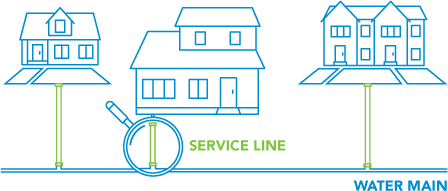Protecting current and future generations
Lead is a type of metal found naturally in the earth. Lead builds up in the body over time, so ongoing exposure, even at low levels, may eventually cause health effects.
The primary source of lead in drinking water is customer-owned lead service lines — the pipe that brings water from the water main in the street to the plumbing in the home. Denver Water estimates there are 64,000-84,000 properties that may have lead service lines in its service area.
The Lead Reduction Program will replace customer-owned lead service lines with copper lines at no direct charge to the customer. It will take 15 years to replace all of them.
Not sure if your service line is made of lead?
The primary source of lead in drinking water is water service lines that contain lead. In Denver Water’s experience, homes built before 1951 are more likely to have lead service lines.
Denver Water has been developing a comprehensive inventory of known and suspected lead services lines using a combination of property records, water quality tests and visual inspections of service lines.
If your home is identified as having a possible lead service line, Denver Water will notify you by mail in spring 2020. We’ll be replacing lead service lines on a neighborhood-by-neighborhood basis, factoring in those who are most vulnerable and at-risk from lead exposure, underserved areas and planned construction activities.
Property owners may wish to replace their lead service line on their own, or during remodel or renovation of a home. Please review our Redevelopment Policy before replacing your lead service line.
When Denver Water finds a lead service line
Currently, when we encounter a lead service line in the course of certain planned construction projects such as pipe replacement, we replace that line entirely with copper. To protect residents’ health, we provide a filter and this important handout: Lead flushing instructions.

